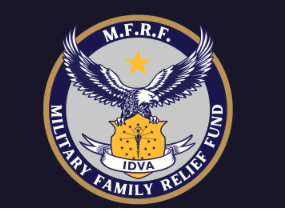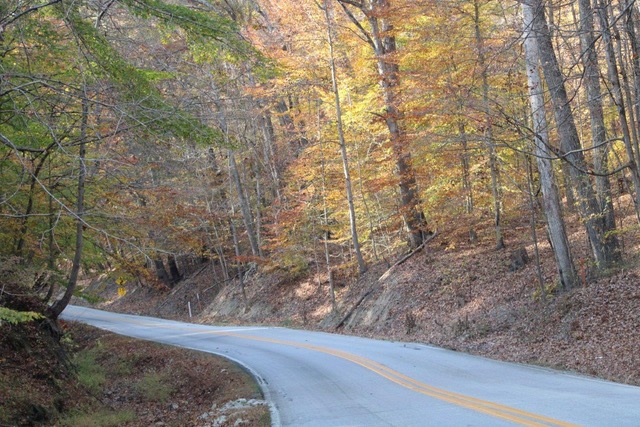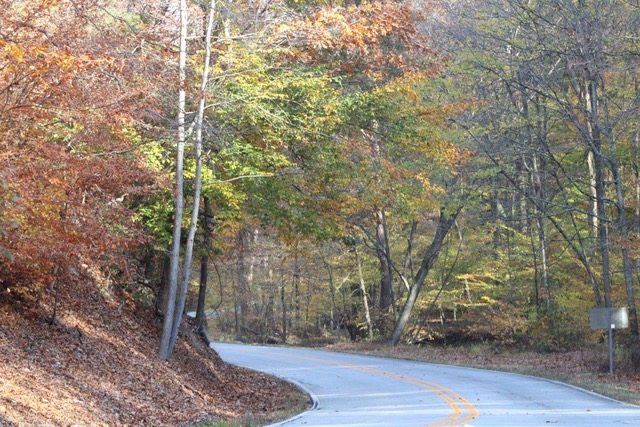
Indiana Capitol Tour Office
http://www.in.gov/idoa/2371.htm

November 1 - December 13

By Jerry Curry, Staff Writer
Autumn and Fall —these words describe the season of some of nature’s most beautiful scenery. The scenery is even more spectator with the addition of sunrise and sunset, as the sun’s light shines on the tips of tree.
The National Forrest Service describes it this way: “The timing of color changes and the onset of falling leaves is primarily regulated by the calendar as nights become longer. None of the other environmental influences- such as temperature, rainfall, food supply-are as unvarying as the steadily increasing length of the night during autumn. As days grow shorter, and nights grow longer and cooler, biochemical processes in the leaf begin to paint the landscape with Nature’s autumn palette.”
Washington County is the go-to place to view nature’s beauty. Its scenic roads are full of color and in some places provide a canopy to drive through.
The colors include red, brown, russet, golden bronze, purple red, light tan and crimson. These colors create a beautiful color palette for the rolling Salem hills.
Drive down any road, especially IN 160 or Highway 60 to experience the mosaic array of colors.
Staff photos by Jerry Curry









By Indiana Department Of Natural Resources
Donate your harvested deer to feed hungry Hoosiers. One donated deer can provide 200 meals for an Indiana family.
Follow these simple steps:
- Enjoy a deer hunting experience.
2. Harvest a deer.
3. Drop off the field-dressed deer at a local participating processor.
4. Processing fees are paid for by Hunt for Hunger (at no cost to you).
5. The processor creates healthy venison burgers to distribute to food banks.
About Hunt for Hunger
In 2008, the Indiana Department of Natural Resources launched the Sportsmen’s Benevolence Fund to provide an easy way for hunters across Indiana to help hungry Hoosiers in need. Since its launch, the program has grown across the state to collect thousands of deer donations, providing hundreds of thousands of meals for Hoosiers.
We’re now calling the program Indiana Hunt for Hunger, providing a clearer name to help all understand this program’s vital mission.
When hunters harvest a deer, they can donate the deer at more than 50 participating processing sites across the state. We’ll take it from there, processing the meat into healthy venison burgers and donating it to area food banks.
We’re proud to partner with Hoosiers Feeding the Hungry, the Dubois County Sportsman’s Club, and Farmers & Hunters Feeding the Hungry for Indiana Hunt for Hunger.
List of participating processors may be found at: https://www.in.gov/dnr/law-enforcement/sportsmens-benevolence-fund/

Native American Heritage Month is celebrated in November to honor the culture, traditions, and achievements of Native Americans, Alaska Natives, Native Hawaiians, and affiliated Island communities.
What started at the turn of the century as an effort to gain a day of recognition for the significant contributions the first Americans made to the establishment and growth of the U.S., has resulted in a whole month being designated for that purpose.
One of the very proponents of an American Indian Day was Dr. Arthur C. Parker, a Seneca Indian, who was the director of the Museum of Arts and Science in Rochester, N.Y. He persuaded the Boy Scouts of America to set aside a day for the "First Americans" and for three years they adopted such a day. In 1915, the annual Congress of the Amertican Indian Association meeting in Lawrence, Kansas, formally approved a plan concerning American Indian Day. It directed its president, Rev. Sherman Coolidge, an Arapahoe, to call upon the country to observe such a day. Coolidge issued a proclamation on Sept. 28, 1915, which declared the second Saturday of each May as an American Indian Day and contained the first formal appeal for recognition of Indians as citizens.
The year before this proclamation was issued, Red Fox James, a Blackfoot Indian, rode horseback from state to state seeking approval for a day to honor Indians. On December 14, 1915, he presented the endorsements of 24 state governments at the White House. There is no record, however, of such a national day being proclaimed.
The first Amertican Indian Day in a state was declared on the second Saturday in May 1916 by the governor of New York. Several states celebrate the fourth Friday in September. In Illinois, for example, legislators enacted such a day in 1919. Presently, several states have designated Columbus Day as Native American Day, but it continues to be a day we observe without any recognition as a national holiday.
In 1990 President George H.W. Bush approved a joint resolution designating November 1990 "National American Indian Heritage Month." Similar proclamations, under variants on the name (including "Native American Heritage Month" and "National American Indian and Alaska Native Heritage Month") have been issued each year since 1994.
Information obtained from The Library of Congress
Interesting Facts:
The number of federally recognized Indian tribes in 2023 were 574
The 3 largest American Indian tribal groupings are Navajo, Cherokee and Mexican American Indian
3 largest Alaska Native tribal groupings are Yup'ik, Inupiat and Alaskan Athabascan
The Trail of Tears was part of a series of forced displacements of approximately 60,000 Native Americans between 1830 and 1850. Nearly 4,000 people died of disease, exposure and malnutrition during that time. To recognize, remember, and pay tribute to their lives, you can walk parts of the Trail of Tears in Springfield, Missouri.
Chipmunk, pecan, skunk and other common words come from an Algonquian language.
The first newspaper in a Native American language was published in 1828.
In 2016, it was estimated that as much as 60 percent of what we eat today was originally domesticated by Native Americans. For instance, corn was cultivated and farmed first by indigenous tribes in Mexico. By the time Europeans arrived in the Americas, Native Americans had been growing corn for thousands of years.
SalemLeader.com
Leader Publishing Company of Salem, Inc.
P.O. Box 506
117-119 East Walnut Street
Salem, Indiana. 47167
Phone: 812-883-3281 | Fax: 812-883-4446
Business Hours:
Mondays through Fridays, 9:00am - 5:00pm
News:
news@salemleader.com
Office:
office@salemleader.com
Publisher:
publisher@salemleader.com
Business
- More Business News
- Go To Guide
- Business Directory
- Auctions
Education
- More Education News
Opinion
- Editorials
- Letters to the Editor
- Columns
- Unsung Heroes
- Days Gone By
- In the Garden
- Guest Columns
- Reader's Poll
- Salem Leader Forum
- Questions and Answers
Church
- Bible Aerobics
- Church News
- Church Directory










